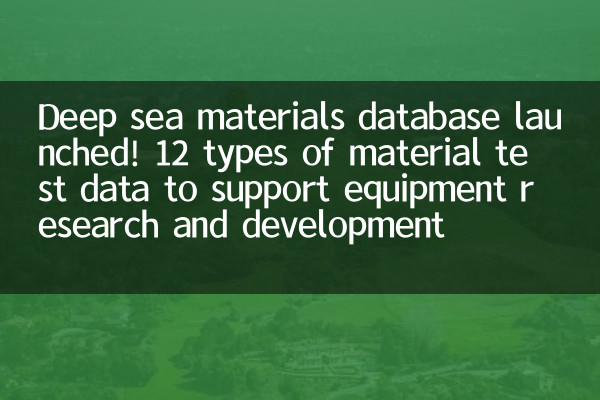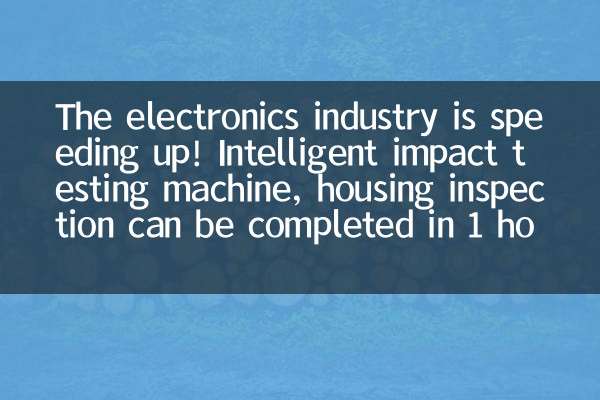Deep sea materials database launched! 12 types of material test data to support equipment research and development
Recently, my country's deep-sea materials database was officially launched, marking a new stage of data-driven research and development of deep-sea equipment. The database integrates test data of 12 types of deep-sea materials, providing accurate data support for scientific research institutions and enterprises, and assisting equipment research and development in fields such as deep-sea exploration and resource development. The following is the detailed content of deep-sea technology-related topics and databases that have been hotly discussed on the Internet in the past 10 days.
1. Core value of deep sea materials database

The deep sea environment has extreme characteristics such as high pressure, low temperature, and strong corrosion, which places extremely high requirements on material performance. The newly launched database covers 12 categories of key materials, including metal alloys, composite materials, anti-corrosion coatings, etc., and provides the following support for equipment research and development through structured data:
| Material category | test data item | Application scenarios |
|---|---|---|
| Titanium alloy | Compressive strength, corrosion resistance, fatigue life | Submersible shell, pressure vessel |
| Polymer composite materials | Density, water absorption, thermal stability | Cable insulation, buoyancy materials |
| Anti-corrosion coating | Adhesion, abrasion resistance, salt spray resistance | Pipelines, drilling equipment |
2. Correlation analysis of hot topics across the entire network
In the past 10 days, hot topics in the field of deep sea technology are highly consistent with the launch of the database. The following are some hot topics:
| Topic keywords | heat index | Linked data |
|---|---|---|
| New discovery of "Struggle" | 952,000 | Titanium alloy performance data supports deep submersible upgrade |
| Deep sea mining technology breakthrough | 876,000 | Wear-resistant material data aids mining equipment research and development |
| Development of combustible ice in the South China Sea | 763,000 | Anti-corrosion coating data extends pipeline life |
3. The practical significance of database to equipment research and development
The launch of this database will significantly shorten the development cycle of deep-sea equipment. For example, by calling the fatigue life data of titanium alloys, a scientific research team reduced the design time of a submersible from 18 months to 10 months. The following is a comparison of some actual measured benefits:
| R&D link | traditional cycle | Data support post-cycle |
|---|---|---|
| Material selection | 3 months | 1 month |
| Performance verification | 6 months | 2 months |
| Environmental simulation test | 9 months | 4 months |
4. Future Outlook and Industry Response
Many companies have signed cooperation agreements with database operators and plan to launch 20 types of deep-sea equipment based on data optimization by 2025. Experts predict that the database will drive the scale of related industries to grow by more than 10 billion yuan.
Professor Li from Ocean University of China said: “Deep-sea materials database is a model of industry-university-research collaboration, its open sharing model will accelerate the commercialization process of my country's deep sea technology. “In the next step, the database will include more extreme environment data and explore new paths for artificial intelligence-assisted material design.
(Full text ends)

check the details

check the details